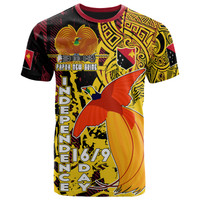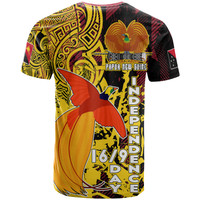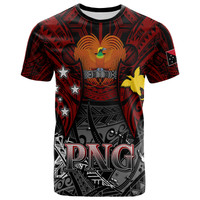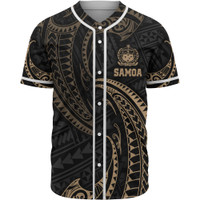The Dark History of Hawai‘i’s Iconic Hand Gesture
Posted by Maris on 26th Feb 2024
You'd be hard-pressed to find someone throwing a "shaka" hand these days if you went to ANY surfing beach—thumb and pinkie outstretched, three middle fingers curled against the palm. The well-known motion, sometimes known as a "hang loose" or "hang ten," has spread far from its Hawaiian roots. The shaka hand is now worn by London nightclub patrons, American presidents, and even the emoji keyboard.
Shakas have been thrown by Kaua'i's Tamba Surf Company owner, Saa Tamba, throughout his entire life. According to him, it's simply a means of expressing hello, farewell, and sharing positivity—the enduring spirit of aloha, if you will. Tamba quickly makes it clear that there is no wave in the shaka. You're practically tossing it out there, as it were, to a buddy or an unknown person. Thus, they resemble capturing the shaka," he remarks. Tamba throws many shakas for various purposes. Saying hello to a friend you haven't seen in a while or signaling someone down at a packed concert are two examples of casual, one-handed shakas that differ in strength.

Used car dealer David "Lippy" Espinda, who was the first to connect the gesture to the word—which is most likely Japanese in origin rather than Hawaiian—played a significant role in the shaka hand's rise to prominence in Hawai'i during the mid-20th century. Espinda used to shake his body and utter his signature line, "shaka, brah!" as a way to end his 1960s television commercials. The gesture was also widely featured in reelection campaign advertisements for Honolulu's longest-serving mayor, Frank Fasi, in the 1970s and 1980s. While Fasi and Espinda contributed to the shaka hand's increased recognition in Hawaii, the sport's globalization in the 1950s and 1960s was aided by the rise in surfing popularity. "Surfing spread it more than anything else," as Tamba puts it.
However, the history of the shaka hand is much less clear than its meteoric ascent to emoji keyboard fame. According to a few different accounts, the gesture first appeared when early Spanish explorers requested a drink. Another theory is that Chinese immigrants from the middle of the 19th century used the gesture to represent the number six.

The Honolulu Star-Bulletin claims that the widely accepted origin tale, however, dates back approximately a century to the Hawaiian plantation worker Hamana Kalili. His task was to feed the stalks of sugar cane into a machine that would squeeze out the sweet juice of the cane. When Kalili's hand became entangled in the rollers one day, he lost all three of his middle fingers. He was hired by the Kahuku Sugar Mill as a security guard; whenever he waved, he would perform the gesture that is today recognized as the shaka hand. Children in the area then imitated and popularized the gesture.

Undoubtedly, incidents similar to Kalili's occurred on Hawaiian plantations, possibly even on a regular basis. Historian Mike Mauricio of the Hawai'i Plantation Village remarks, "You know, there must be dozens of people with three fingers missing in the middle of their hand." Even if we are aware of Kalili's existence, Mauricio doesn't think there is sufficient proof to conclude that he was the one who invented the gesture.
Cristiana Bastos, main investigator of Colour of Labour: the Racialized Lives of Migrants, University of Lisbon, concurs that Kalili may not have been the originator of the gesture, but she adds that the story is about multiple people. Although Kalili's tragic story is "mythic," she acknowledges that it reminds us of a time in Hawai'i "when plantations were very important." According to Bastos, the significance of Native Hawaiians in plantation history is frequently disregarded. Paradoxically, there are some similarities between that little-known, frequently violent period of Hawaiian history and the contemporary, feel-good shaka gesture.

Countless laborers toiled in appalling conditions to cultivate and harvest "white gold," or sugar cane, which is a "very sharp, unforgiving plant," when Hawai'i's plantations first began operating in the late 1800s, according to Nicholas B. Miller, assistant professor at Florida's Flagler College and a former researcher at the Colour of Labour project. As harvest drew near, the miserable labor conditions only became worse. Fields of sugar cane would be burned to remove the leaves, revealing the sugar-bearing stalk for simpler harvesting. Miller claims that the fields "would look like the pits of hell were opening up" during these major burning.
Kalili's employment at the plantation, prior to and following his accident, which transpired about 1917, highlights a facet of plantation history that is sometimes disregarded: the contribution of Native Hawaiians as laborers far into the 1900s. The Kalili mythology, according to Miller, is particularly intriguing since it suggests that a native Hawaiian was active in the sugar industry long after those people were no longer considered to be a part of that society. Rather than acknowledging the presence of Indigenous Hawaiians, historians frequently concentrate on the migrant contract workers who arrived in Hawaii, according to Bastos.

Due to an immigration wave that began in the early 20th century, the demographic of plantation laborers significantly expanded. People from Puerto Rico, China, Japan, Portugal, Norway, Korea, and the Philippines arrived in search of employment in the sugar industry. Miller claims that as the population of the islands increased in number and variety, the haole people—white outsiders who managed the plantations—and the "locals," who basically included everyone else, divided the society. The centuries-long history of the islands' Indigenous community was gradually disregarded, simply another component of what was widely portrayed as a harmonic melting pot of diversity, as foreign-born plantation laborers were seen as "local" as Hawaiians.
According to Bastos, "you don't get to see this as harmoniously if you look from the perspective of Indigenous Hawaiians who were dispossessed and who were not called in that celebration [of diversity] in equal terms, or in the terms that they would want for themselves because they were there beforehand."
It doesn't really matter whether Kalili invented the shaka gesture or not. Even mythical tales have the power to highlight significant aspects of our past and disclose essential truths about who we are. His terrible accident demonstrates that, against widespread belief, Native Hawaiians were more prevalent throughout the islands' plantation past.
It doesn't really matter whether Kalili invented the shaka gesture or not. Even mythical tales have the power to highlight significant aspects of our past and disclose essential truths about who we are. His terrible accident demonstrates that, against widespread belief, Native Hawaiians were more prevalent throughout the islands' plantation past.














